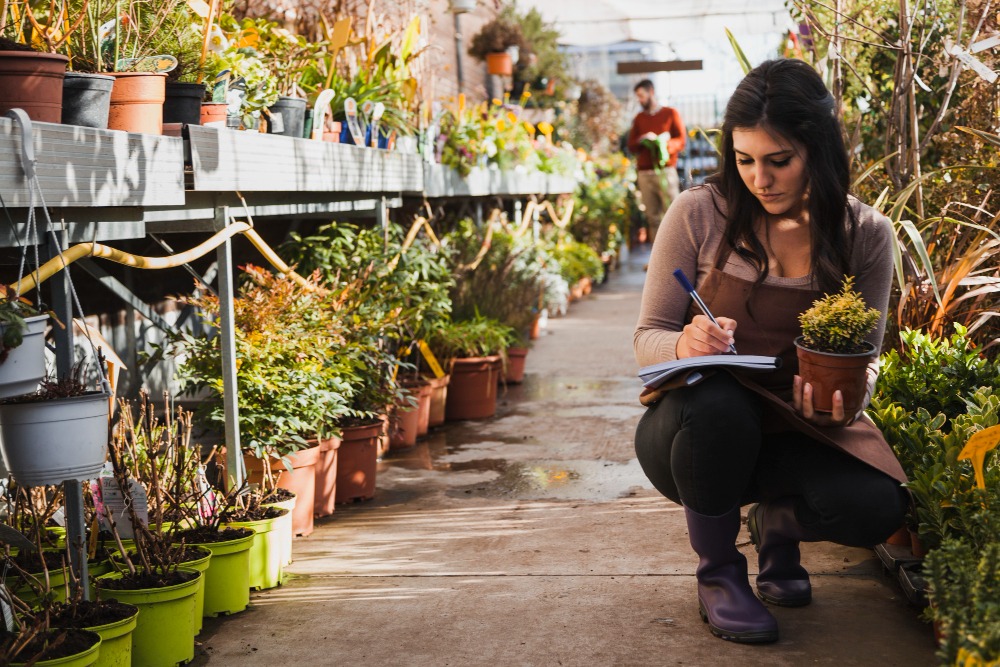Introduction
In recent years, the surge of interest in sustainable living and urban farming has taken root in the hearts of city dwellers. As we step into 2024, growing your own food in the city isn’t just a trend; it’s a meaningful way to contribute to a more sustainable world while enhancing your daily life. Urban gardening transforms small spaces into lush, productive areas, enabling you to enjoy fresh, organic produce right at your doorstep. Whether you have a tiny balcony, a rooftop, or a small backyard, this guide will provide practical tips and innovative ideas to help you create your green oasis amid the concrete jungle. Embrace the art of city farming and experience not only the joy and satisfaction of harvesting your own food but also the health and ecological benefits that come with it. Let’s embark on this green journey together, turning every available space into a verdant, fruitful sanctuary.
Benefits of Urban Gardening
Urban gardening transforms concrete jungles into lush, green spaces, providing numerous benefits for city dwellers. As we navigate towards a more sustainable future, the importance of urban gardens cannot be overstated. Not only do these green spaces beautify the city, but they also offer health and environmental perks that are invaluable in today’s fast-paced urban environments.
Access to Fresh and Organic Produce
One of the most immediate benefits of urban gardening is the access it provides to fresh, organic produce. Growing your food means you know exactly what goes into the soil and onto your plants, allowing you to avoid harmful pesticides and chemicals. This direct connection to your food source can lead to a healthier diet, packed with vitamins and minerals. Plus, the freshness of home-grown fruits and vegetables is unparalleled, enhancing the flavors and nutritional value of your meals.
Contribution to Environmental Sustainability
Urban gardens play a critical role in promoting environmental sustainability. They contribute to biodiversity by providing habitat for pollinators such as bees, butterflies, and birds. Additionally, plants help to improve air quality by absorbing carbon dioxide and releasing oxygen, acting as natural air purifiers. Urban gardening also mitigates the heat island effect common in cities, as plants lower the surrounding temperatures through the process of evapotranspiration. Furthermore, by growing food locally, you reduce the carbon footprint associated with transporting produce from faraway farms to grocery stores.
Getting Started with Urban Gardening
Embarking on an urban gardening journey can seem daunting at first, but with a bit of planning and some basic knowledge, you can transform any small space into a thriving green oasis. Here’s how to get started:
Choosing the Right Plants for Your Space
Selecting the right plants is essential for a successful urban garden. Consider the amount of space you have available and choose varieties that are known to thrive in your local climate. If space is limited, opt for compact or dwarf varieties. Herbs, leafy greens, tomatoes, peppers, and strawberries are all great choices for urban gardens. Don’t forget to take into account the aesthetic appeal of your plants; a mix of ornamental and edible plants can create a visually pleasing garden that is both functional and beautiful.
Understanding Sunlight and Water Requirements
Every plant has specific needs when it comes to sunlight and water. Before planting, determine the areas of your space that receive full sun, partial sun, or shade throughout the day. Match your plants to their ideal light conditions to ensure healthy growth. Additionally, understand the watering needs of each plant. While some plants thrive in moist soil, others prefer drier conditions. Overwatering can be just as harmful as underwatering, so monitor soil moisture levels regularly and adjust your watering schedule accordingly.
Utilizing Vertical Space for Maximum Yield
In the city, the horizontal space might be limited, but that doesn’t mean you can’t have a productive garden. Utilizing vertical space is a smart way to maximize your yield. Use trellises, hanging baskets, wall planters, and shelves to grow plants upwards. Vertical gardening is particularly effective for vines, such as peas, cucumbers, and certain types of squash. It also allows for better air circulation around plants, reducing the risk of disease. By thinking vertically, you can significantly increase the amount of greenery and produce in your urban garden, turning even the smallest balcony or patio into a lush, productive oasis.
Designing Your Urban Garden Oasis
Creating an attractive and productive urban garden requires careful planning and attention to detail. The design process involves selecting the right plants, incorporating functional and aesthetic elements, and maximizing the limited space available in urban settings.
Creating a Functional Layout
A functional layout is crucial for the success of any urban garden. Start by assessing the space available and determining how much sunlight it receives throughout the day. This will help you decide which plants are best suited for your garden based on their light requirements. Consider using vertical gardening techniques, such as trellises for climbing plants or hanging baskets, to maximize your space. These approaches not only enhance the productivity of small areas but also add an element of depth to the garden. Additionally, group plants with similar water and sunlight needs together to simplify maintenance efforts. Including paths or walkways in your design can help prevent soil compaction and make it easier to access plants for harvesting and care.
Incorporating Aesthetically Pleasing Elements
Beyond its functional aspects, your urban garden should also serve as a tranquil green oasis within the concrete jungle of the city. Incorporate a variety of plants with different textures, colors, and heights to create a visually engaging landscape. Edible flowers and herbs can add a splash of color and aroma, enhancing the sensory experience of your garden. Create cozy seating areas surrounded by plants to provide a peaceful retreat where you can relax and enjoy the fruits of your labor. Decorative containers, artistic trellises, and ambient lighting can further enhance the ambiance of your urban oasis, making it a beautiful and inviting space.
Sustainable Practices in Urban Gardening
Adopting sustainable gardening practices not only benefits the environment but also makes your garden more resilient and productive. Two key aspects of sustainable urban gardening include composting and water conservation.
Composting and Recycling in a City Setting
Composting is an excellent way to recycle kitchen scraps and yard waste into rich soil that can nourish your garden. Even in a city setting, small-scale composting systems like worm bins or bokashi buckets can fit into tight spaces and don’t produce unpleasant odors. These systems expedite the composting process, providing valuable nutrients for your plants while reducing the amount of waste sent to landfills. Additionally, repurposing household items as plant containers or garden decorations keeps them out of the waste stream and adds unique character to your garden.
Water Conservation Techniques for Urban Gardens
Water conservation is another critical aspect of sustainable urban gardening. Drip irrigation systems, soaker hoses, or rainwater harvesting methods can significantly reduce water use while ensuring your plants receive the moisture they need. Mulching around plants helps retain soil moisture, reduce water evaporation, and prevent weed growth, thereby decreasing the need for frequent watering. Additionally, selecting drought-resistant plant varieties can further reduce your garden’s water requirements. By implementing these sustainable practices, you can create a productive and environmentally friendly urban garden oasis.
Overcoming Challenges in Urban Gardening
Urban gardening presents a unique set of challenges compared to traditional farming, primarily due to the constraints of space and the urban environment. However, with a bit of innovation and resilience, these hurdles can be overcome, allowing city dwellers to cultivate their green oases successfully.
Dealing with Limited Space
Limited space is arguably the most significant challenge faced by urban gardeners. However, this constraint can inspire creative solutions:
– Vertical Gardening: Utilize vertical spaces by installing wall planters and hanging pots. This technique maximizes your growing area without requiring additional square footage.
– Container Gardening: Almost any container can be repurposed as a plant pot, provided it has proper drainage. Containers are versatile, allowing you to grow a variety of plants in small spaces like balconies or windowsills.
– Community Gardens: Participating in a community garden can provide you with additional space to grow your food. It’s also a great way to connect with neighbors and learn new gardening techniques.
Managing Pests and Diseases in the City
Pests and diseases can thrive in the city due to the close proximity of plants and varying levels of maintenance between urban gardens. Here are some strategies to manage these challenges:
– Natural Pesticides: Opt for natural and organic pesticides to minimize harm to beneficial insects and the environment. Neem oil and diatomaceous earth are effective against a wide range of pests.
– Companion Planting: Some plants can repel pests naturally when planted together. For example, marigolds can deter nematodes and other insects, making them an excellent companion for tomatoes and peppers.
– Regular Monitoring: Keep an eye on your plants for early signs of pest infestation or disease. Catching problems early can prevent them from spreading and save your crops.
Harvesting and Enjoying Your Homegrown Produce
The joy of urban gardening culminates in the harvesting and consumption of your homegrown produce. Knowing when and how to harvest, as well as ways to incorporate fresh produce into your meals, can enhance this rewarding experience.
Tips for Harvesting at the Right Time
– Monitor Growth: Keep track of growth durations recommended on seed packets or plant tags. Some plants, like lettuce and leafy greens, can be harvested continuously.
– Check Ripeness: Look for signs of ripeness, such as color change in tomatoes or a slight softness in peppers and squash.Textures and aromas can also indicate readiness.
– Harvest in the Morning: Whenever possible, harvest your produce in the morning when moisture levels are highest. This ensures your fruits and vegetables are crisp and full of flavor.
Recipes and Cooking Ideas for Freshly Harvested Produce
Your garden’s bounty can inspire a multitude of culinary creations:
– Fresh Salads: There’s nothing like a salad made with fresh, crisp greens right from your garden. Add a mix of colorful vegetables, edible flowers, and herbs for a delightful meal.
– Homemade Pesto: Basil grows prolifically in urban gardens and can be turned into delicious homemade pesto. It’s perfect for pasta, sandwiches, or as a marinade.
– Stir-fries and Sautes: Quickly cook up a mix of freshly harvested vegetables with some garlic, ginger, and soy sauce for a nutritious and tasty stir-fry.
Growing your food and overcoming the challenges of urban gardening are immensely rewarding endeavors. Not only do they provide a sustainable source of fresh produce, but they also transform urban spaces into lush, green oases that improve the quality of city living.
Conclusion: Embracing Urban Gardening for a Greener Future
Urban gardening is not just a trend; it’s a movement towards a sustainable and self-sufficient lifestyle. By taking up this practice, city dwellers can transform their living spaces into green oases, providing not only fresh produce but also a significant positive impact on the environment. This approach to urban living encourages a deeper connection with nature, promotes healthier eating habits, and fosters a sense of community among fellow gardeners.
The benefits of growing your own food in the city extend beyond the personal to the global scale. It reduces the carbon footprint associated with transporting food, conserves water, and helps to combat the heat island effect common in urban areas. Moreover, it contributes to biodiversity by providing habitats for beneficial insects and birds.
As we look towards 2024, embracing urban gardening and incorporating it into our daily lives is a step towards a greener, more sustainable future. Whether it’s a small herb garden on a windowsill, a rooftop vegetable patch, or a community garden plot, every green space counts. Let’s take initiative, get our hands dirty, and grow towards a healthier, more vibrant urban environment.


